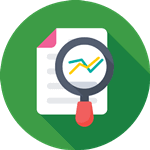 Hypothesis testing is a fundamental concept in the field of statistics, providing a systematic framework for analyzing data and drawing valid conclusions. It serves as a powerful tactic for researchers and analysts to test assumptions, evaluate relationships between variables, and make informed decisions. We will help you explore the steps involved when testing the hypothesis, offering a comprehensive guide to conducting accurate statistical analyses. The process begins with formulating the null and alternative hypotheses, followed by setting the significance level, collecting and analyzing data, and computing the test statistic. The critical region is determined, and the test statistic is compared to make a decision regarding the null hypothesis. Conclusions are drawn, and inferences are made based on the results. By understanding and implementing our guidance, you can effectively utilize hypothesis testing to reveal valuable insights, support research findings, and make data-driven decisions in various domains.
Hypothesis testing is a fundamental concept in the field of statistics, providing a systematic framework for analyzing data and drawing valid conclusions. It serves as a powerful tactic for researchers and analysts to test assumptions, evaluate relationships between variables, and make informed decisions. We will help you explore the steps involved when testing the hypothesis, offering a comprehensive guide to conducting accurate statistical analyses. The process begins with formulating the null and alternative hypotheses, followed by setting the significance level, collecting and analyzing data, and computing the test statistic. The critical region is determined, and the test statistic is compared to make a decision regarding the null hypothesis. Conclusions are drawn, and inferences are made based on the results. By understanding and implementing our guidance, you can effectively utilize hypothesis testing to reveal valuable insights, support research findings, and make data-driven decisions in various domains.
The best guidelines for statistical hypothesis testing;
- Formulate the Null and Alternative Hypotheses: The first step is to clearly define the null hypothesis (H0) and the alternative hypothesis (Ha). The null hypothesis represents the status quo or the absence of an effect, while the alternative hypothesis suggests the presence of a significant effect or difference which must be carefully crafted to reflect the research question and the specific aims of the study.
- Set the Significance Level: Denoted by α, the significance level needs to be determined as it represents the maximum probability of rejecting the null hypothesis when it is true. Commonly used values for α include 0.05 and 0.01, which correspond to a 5% and 1% chance of committing a Type I error, respectively. Choosing the appropriate significance level is crucial as it impacts the balance between Type I and Type II errors.
- Collect and Analyze Data: Gather relevant data through careful experimentation or sampling where the collected data should be analyzed using appropriate statistical techniques. Depending on the nature of the research question, various statistical tests such as t-tests, chi-square tests, or analysis of variance (ANOVA) may be employed. These tests help to evaluate the relationship between variables and determine the statistical significance of the observed results.
- Compute the Test Statistic: For hypothesis testing in statistics, the test statistic is a numerical value calculated from the sample data that measures the degree of agreement or disagreement with the null hypothesis and the choice of test statistic depends on the specific statistical test used and the nature of the data being analyzed. For example, in a t-test, the test statistic is the t-value, while in a chi-square test, it is the chi-square statistic. By computing the test statistic, we obtain a quantifiable measure that will be used to make an inference about the population.
- Determine the Critical Region: Determine the rejection region which is a range of values that, if the test statistic falls within, would lead to the rejection of the null hypothesis. The critical region is determined by the significance level and the distribution of the test statistic as it is typically represented by the extreme tail(s) of the distribution.
- Compare the Test Statistic and Critical Region: If the test statistic falls within the critical region, we reject the null hypothesis in favor of the alternative hypothesis. If the test statistic falls outside the critical region, we fail to reject the null hypothesis and this comparison enables us to make an informed decision based on the available data and the predetermined significance level.
- Draw Conclusions and Make Inferences: Based on the outcome of the test, conclusions can be drawn, and inferences can be made regarding the population under investigation. If the null hypothesis is rejected, it suggests that there is sufficient evidence to support the alternative hypothesis. On the other hand, if the null hypothesis is not rejected, it implies that there is insufficient evidence to conclude that the alternative hypothesis is true which provides valuable insights and guides further research or decision-making processes.
- Report and Interpret Results: This involves summarizing the findings, presenting the statistical evidence supporting the conclusions, and discussing the implications of the results. It is important to communicate the results clearly and concisely, highlighting the statistical significance and practical significance of the study.
By following these essential steps that we have outlined, researchers and statisticians can conduct hypothesis testing systematically and reliably. The careful formulation of hypotheses, proper analysis of data, and authentic interpretation of results lead to robust statistical conclusions and contribute to the advancement of knowledge in various fields. Hypothesis testing is an indispensable tool that enables us to make evidence-based decisions and draw meaningful conclusions from the vast collection of data available to us.
Best Help with Testing Hypotheses in Data Science; Ideal Service
 Hypothesis is a critical tool in the arsenal of data analysts, empowering them to extract valuable insights and make informed decisions based on data analysis. By formulating hypotheses and subjecting them to rigorous testing, data scientists can determine the validity of their assumptions and uncover meaningful patterns. We will explore the significance of the hypothesis concerning data science, examine the various types of null hypotheses used, and look into the rationale behind data analysis hypothesis tests. In the field of data science, hypothesis plays a pivotal role in enabling objective decision-making and drawing robust inferences. It offers a structured framework for data scientists to move beyond mere observations and rely on statistical evidence to support or reject hypotheses. Evaluating the hypothesis quantifies the uncertainty associated with data, thereby providing a measure of confidence in the findings. By subjecting hypotheses to rigorous scrutiny, it acts as a quality assurance mechanism, ensuring reliable and robust results. Understanding the different types of null hypotheses and the rationale behind two-tailed hypothesis trials equips data scientists with the necessary tools to solve the hidden insights within datasets. Hypothesis testing when it comes to data science fuels innovation and helps shape evidence-based practices across diverse domains.
Hypothesis is a critical tool in the arsenal of data analysts, empowering them to extract valuable insights and make informed decisions based on data analysis. By formulating hypotheses and subjecting them to rigorous testing, data scientists can determine the validity of their assumptions and uncover meaningful patterns. We will explore the significance of the hypothesis concerning data science, examine the various types of null hypotheses used, and look into the rationale behind data analysis hypothesis tests. In the field of data science, hypothesis plays a pivotal role in enabling objective decision-making and drawing robust inferences. It offers a structured framework for data scientists to move beyond mere observations and rely on statistical evidence to support or reject hypotheses. Evaluating the hypothesis quantifies the uncertainty associated with data, thereby providing a measure of confidence in the findings. By subjecting hypotheses to rigorous scrutiny, it acts as a quality assurance mechanism, ensuring reliable and robust results. Understanding the different types of null hypotheses and the rationale behind two-tailed hypothesis trials equips data scientists with the necessary tools to solve the hidden insights within datasets. Hypothesis testing when it comes to data science fuels innovation and helps shape evidence-based practices across diverse domains.
What is the importance of doing a test of hypothesis for data science?
- Objective Decision Making: It provides a systematic framework for data scientists to make objective decisions which allows them to move beyond anecdotal observations and leverage statistical evidence to support or reject hypotheses.
- Drawing Inferences: The process enables data scientists to draw meaningful inferences from data since by formulating clear hypotheses, they can evaluate the relationship between variables and gain insights into the underlying mechanisms or factors influencing the phenomenon being studied.
- Quantifying Uncertainty: By calculating p-values and confidence intervals, Our experts provide the best help with testing hypotheses in data science to determine the level of confidence to place in the findings and make well-informed decisions based on the evidence at hand.
- Quality Assurance: Hypothesis testing acts as a quality assurance measure and Subjecting hypotheses to rigorous testing helps to identify flaws in data collection, data analysis methods, or underlying assumptions, ensuring robust and reliable results.
What are the different types of null hypotheses in data science?
- Equality Null Hypothesis: This type of null hypothesis assumes that there is no difference or relationship between the variables under investigation. For example, in a survey comparing the mean income of two groups, the equality null hypothesis would state that the mean incomes are equal.
- Independence Null Hypothesis: It assumes that there is no association or dependence between two categorical variables. For instance, in analyzing survey data, the independence null hypothesis would suggest that there is no relationship between gender and voting preference.
- Homogeneity Null Hypothesis: This type of null hypothesis assumes that the distributions or variances of multiple groups are equal. It is often used in analysis of variance (ANOVA) tests, where the homogeneity null hypothesis states that there are no significant differences between the means of the groups being compared.
- Non-Inferiority Null Hypothesis: This hypothesis aims to demonstrate that a new intervention or treatment is not significantly worse than an existing standard as non-inferiority trials in clinical research often use this type of null hypothesis.
How long does it take an expert to run a hypothesis test?
The duration required for an expert to conduct such a test can vary significantly based on several factors. These factors include the complexity of the research question, the type of data being analyzed, the chosen statistical method, the expertise of the researcher, and the software tools at their disposal. The complexity of the research question plays a pivotal role in determining the time needed for a hypothesis test. Simple questions with well-defined parameters may be relatively quick to test, while more complex inquiries may demand a longer duration due to the need for extensive data collection and analysis. The type of data being examined can impact the time frame and if the data is readily available and well-structured, it can expedite the testing process. Messy or incomplete data may require additional time for cleaning and preprocessing. Some hypothesis tests, like a t-test or chi-square test, are straightforward and can be executed relatively quickly. However, more complex methods, such as hierarchical regression or structural equation modeling, demand a deeper understanding of statistics and a more substantial time investment. A researcher may perform hypothesis tests more efficiently due to their familiarity with statistical concepts and tools while a novice may require more time to learn and apply these techniques. The availability of specialized software packages like R, Python with libraries such as SciPy and StatsModels, or commercial options like SPSS can streamline the process, saving time compared to manual calculations. The time required can range from a few hours for straightforward tests to several weeks or even months for complex research projects. The key factors influencing the duration include the research question's complexity, data quality, chosen statistical method, researcher's expertise, and the availability of suitable software tools.
Hypothesis testing is a cornerstone of data science, enabling researchers and our experienced data analysts to derive meaningful insights from data. By understanding the importance of hypothesis testing, exploring the types of null hypotheses, and recognizing the rationale behind the tests, our experts can make more informed decisions and contribute to evidence-based practices in their respective fields. Through hypothesis testing, data science continues to reveal the power of data, driving innovation and fostering a deeper understanding of the world around us.






 NB: Sometimes we need to first assess your work to quote accordingly. Equally we may highlight a service input review on your placed order to confirm if the paid amount is
NB: Sometimes we need to first assess your work to quote accordingly. Equally we may highlight a service input review on your placed order to confirm if the paid amount is
